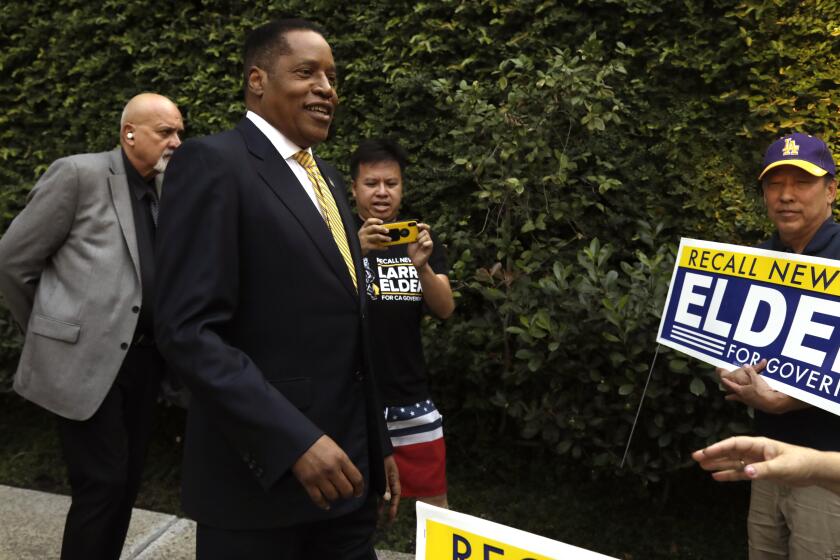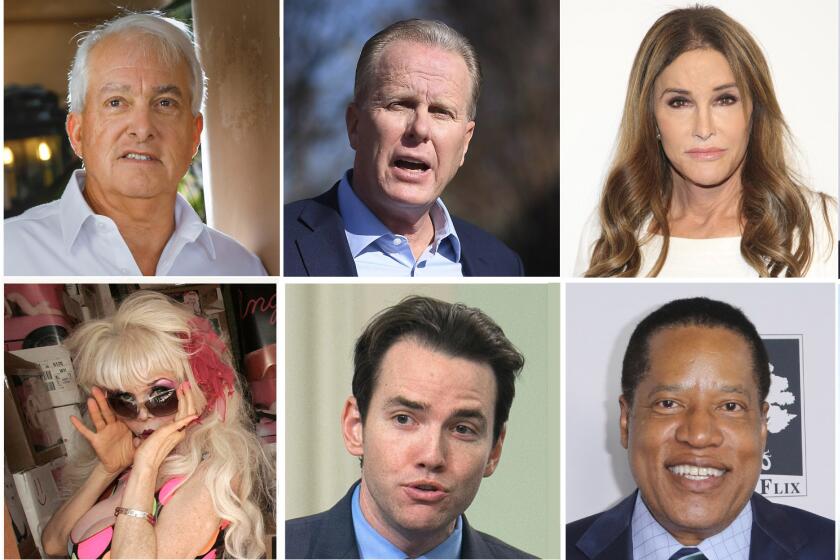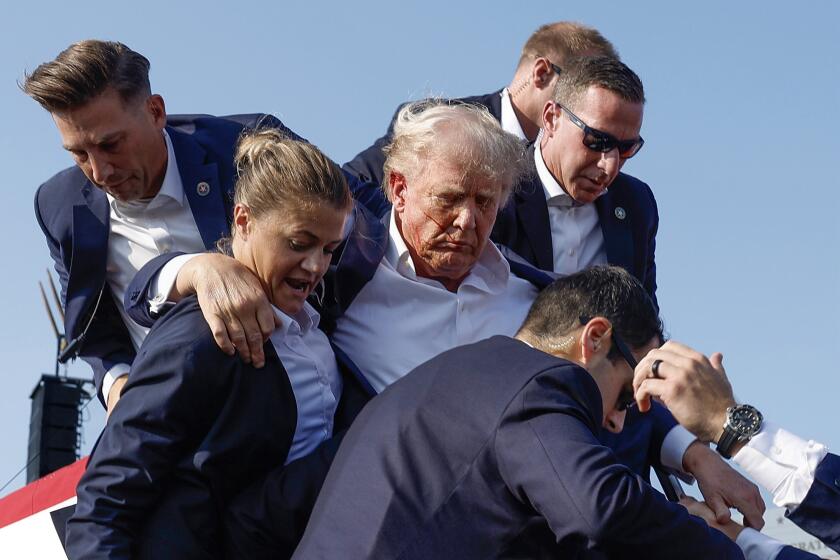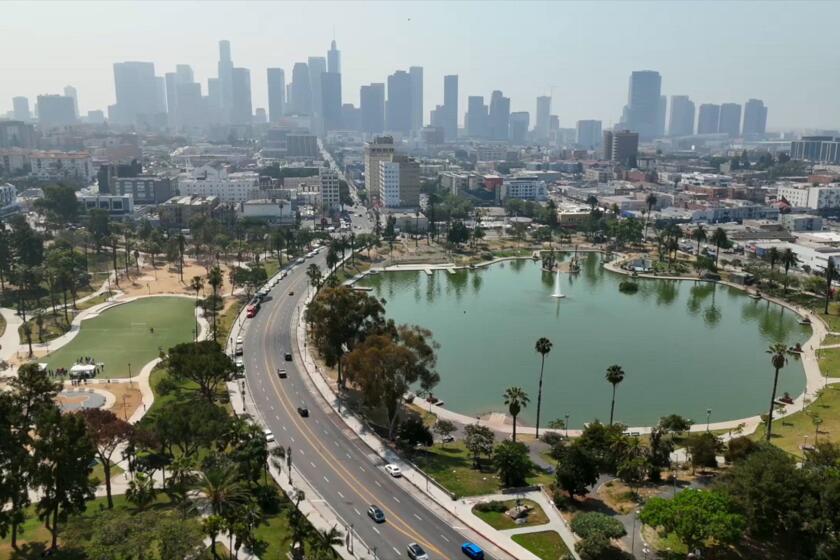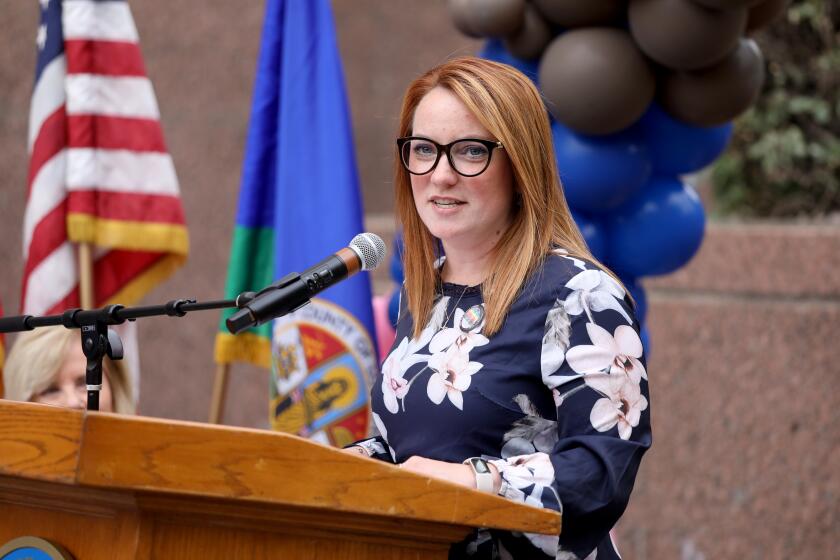Editorial: Change California recall rules — but don’t take power away from the people

It was not even two months ago that Californians made the correct decision to allow Gov. Gavin Newsom to finish his first term rather than handing over control of the state to one of 46 people running to replace him, most of whom were not qualified for such an important job. Voters and policymakers would be wise not to forget how close the state came to disaster.
If a majority of voters had decided to recall Newsom in the Sept. 14 election, then the state would now be in the hands of a bombastic conservative radio host with no experience in public office, despite the fact that only 27.6% of the recall voters wanted him in the job. That’s undemocratic, to say the least, and it’s one feature of the 110-year-old recall rules that has got to go.
Happily, the state’s lawmakers are considering it, along with other reforms to the procedures of recalling statewide elected officials. Recently, the Legislature convened the first of what may be three joint hearings with the goal of putting something on the November 2022 ballot. The recall was adopted by voters as an amendment to the state constitution in 1911, and it will take voter approval to make any major changes. That’s as it should be.
California’s gubernatorial recall process needs some adjustments to promote democratic oversight while eliminating undemocratic takeovers.
We are grateful that lawmakers are heeding the calls to improve the recall process, but they must tread carefully. Their goal should be to make the recall process better for voters, not for elected officials who may be targeted for removal.
For that reason, lawmakers should not consider making it so difficult that it is virtually impossible to qualify a recall. We doubt that voters would support it, anyway. Loyola Law School professor Jessica Levinson said it best: “If there’s one thing that tends to unite our voters — not just Democrats, not just Republicans, but all voters — it’s the whiff of anything that would look like taking power away from them.”
Since 1913, there have only been two gubernatorial recalls — only one of which was successful, in 2003 — despite 55 recall petitions launched. That the Newsom recall happened at all was a fluke; the petition was about to die for lack of support last November when a court extended the deadline for signature gathering because of the COVID-19 pandemic — at about the same time that Newsom and his wife foolishly attended a fancy dinner party, umasked, with 10 other people.
That’s why it makes the most sense to focus on fixing the two-part election that allows a replacement candidate with potentially a fraction of the votes to take power. One way to do that is to get rid of the replacement question altogether and, in the event of a gubernatorial recall, elevate the lieutenant governor, a position that really only exists as a backup in case the governor can no longer serve.
The 110-year-old recall rules are showing their age and need updating. Most Californians agree.
Another, perhaps more palatable option to voters (and more applicable to other statewide officers, who don’t have elected understudies) would be to separate the recall and the replacement ballots — that is, hold a recall election and if the elected official is removed, then hold a second election later to choose the replacement. Yes, this would mean that taxpayers are on the hook for the cost and time of another election, or possibly two more if no replacement candidate gets 50% and there’s a runoff, but these additional elections would only happen if the recall is successful. What’s more, separating the two elections would remove the incentive for a partisan attack.
What legislators ought to avoid is proposing standards for when a recall can be launched. While some advocates want to restrict recalls to elected officials accused of malfeasance, that’s too subjective. What one voter views as acceptable from an elected official may look like wrongdoing to another.
Finally, it makes sense to advance the reforms in more than one ballot measure, as Karthick Ramakrishnan, a public policy professor at UC Riverside, suggested to lawmakers at the hearing last week. That way if voters don’t like a proposal to, say, change the signature requirement from 12% of votes cast in the last election to 10% of all registered voters, it won’t tank all the reforms. He recommended adding a sunset provision as well, so that voters aren’t stuck with any unforeseen problems with recall changes.
The Legislature plans to hold at least one more hearing in December and to consider whether the rules need updating for local elections as well. It’s good to get input, but legislators must act fast, before memories of the political nightmare that could have been fade away.
More to Read
A cure for the common opinion
Get thought-provoking perspectives with our weekly newsletter.
You may occasionally receive promotional content from the Los Angeles Times.
